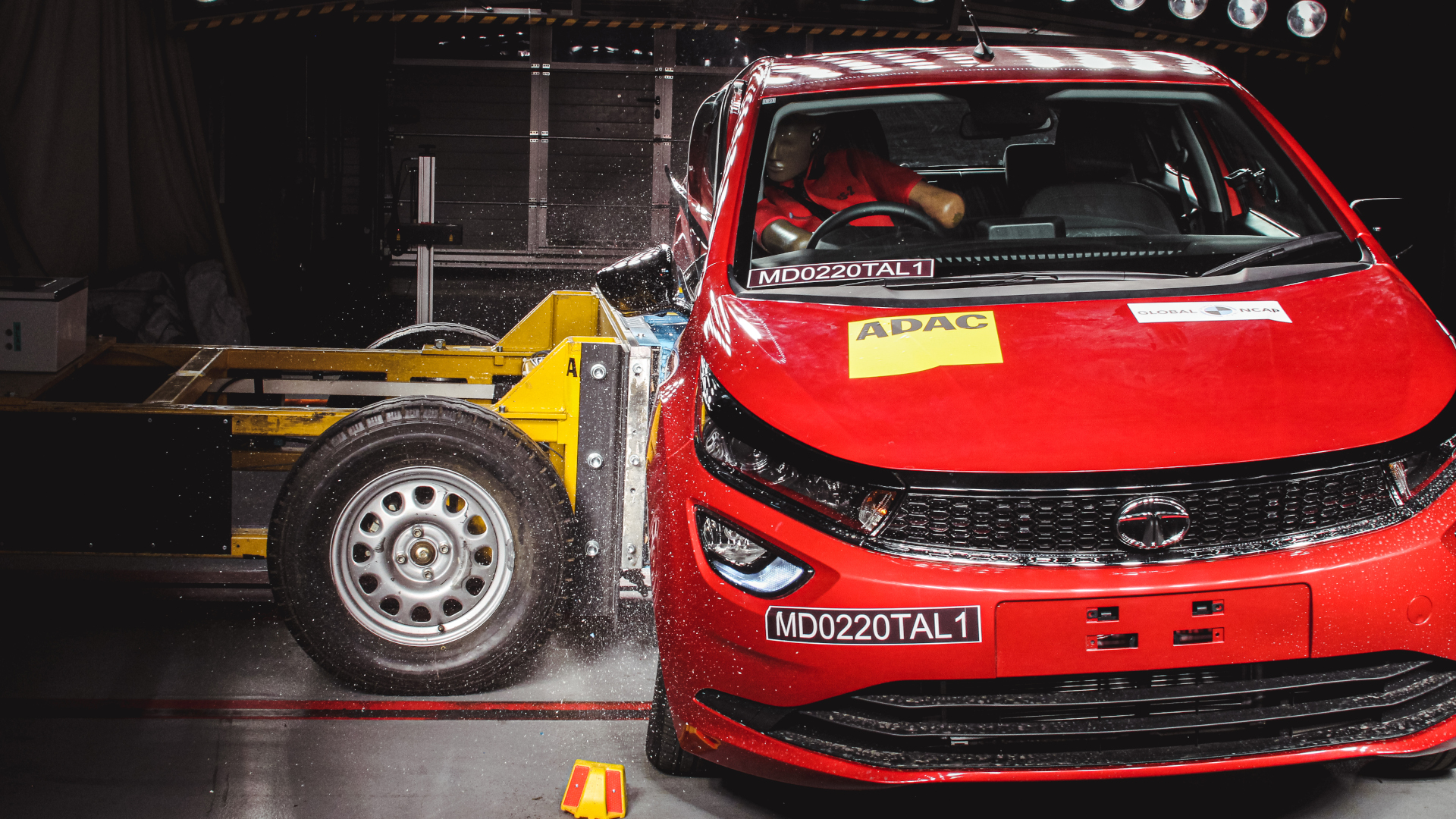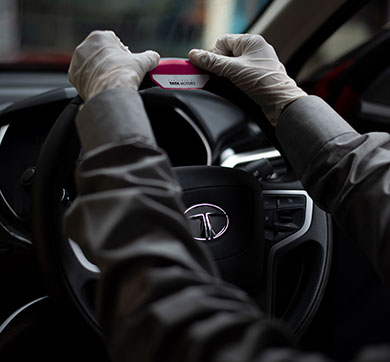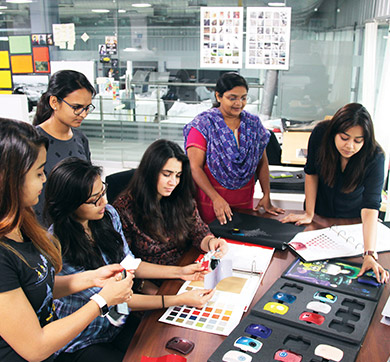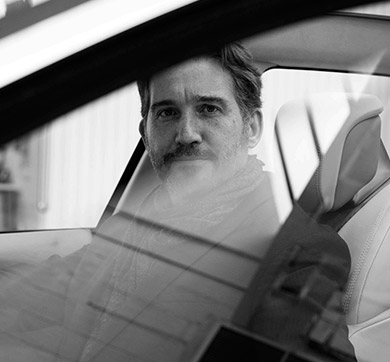November 2021 | 750 words | 3-minute read
Last year, in the middle of the raging pandemic, Tata Motors Ltd (TML) became the only carmaker in India to register sales growth. The revenue from passenger vehicles (PVs) increased by a whopping 106% in FY21 which was not only on account of pent-up demand and a refreshed basket of products but also the safety standards and ratings of our vehicles.
Being first
In 2018, Tata Nexon became the first designed, developed and made-in-India car to receive a five-star rating from the Global New Car Assessment Programme (GNCAP) (https://www.globalncap.org/) for adult occupancy safety — an achievement that put India on the global map. In 2020 Tata Altroz became the first premium hatchback in the Indian automotive industry to receive a 5-star GNCAP rating and Tiago and Tigor received 4-star GNCAP ratings, enabling TML to fulfil its 'safety is for all and not a privilege for few' strategy.
The success of Tata cars in repeatedly meeting global crash-test standards isn’t something that happened overnight. Not many know that we were the first in India to invest in a crash test facility back in 1997, a year before the launch of the Indica — India’s first fully indigenous passenger car.

Crash tests are critical to evaluate vehicle structure behaviour in a crash and implement necessary design interventions, to mitigate injuries and loss of life to vehicle occupants and pedestrians. Its importance can’t be overstated in a country like India, where road fatalities take around 1.5 lakh lives every year or 400 in a day. The fact that TML invested in such a facility at a time when there were no such benchmarks in India speaks volumes about Tata’s outlook towards car safety.
As an original equipment manufacturer, TML has gone beyond the mere letter of the regulatory framework by building a long-term strategic roadmap that includes expert engineering teams, making investments, incubating innovative concepts, choosing the right technology partners, and delivering solutions for mass markets though frugal engineering. As a result, TML not only leads the safety quotient for PVs in India, but it now also aims to offer the safest car in every segment.
The latest addition is the Tigor Electric Vehicle (EV), which is the only EV in the country with a GNCAP 4-star rating for both adult and child safety.
What customers want
Buyers today prioritise safety over factors like speed and mileage before making a purchase decision.
Most of our offerings, for years now, come equipped with airbags, seat-belt reminders, alert systems for speed above 80kmph, reverse parking sensors, manual override over the central locking system for emergencies. We also proactively offer enhanced adult and child occupant protection through class-leading safety features like fortified cabins that absorb impact energy and protect the passenger, tyre pressure monitoring system, side and curtain airbags, ISOFIX anchorages for child safety, etc. This was further elevated in the 2020’s New Forever range, which featured best-in-class safety alongside a major upgrade in design, powertrain and technology. And with safety being an important pillar of mobility transformation through CESS (Connected, Electric, Safe, and Shared), the demand for it in India is only poised to grow.
Role of digital
Electronic and software content in vehicles is on the rise, and the move towards EV will further it. In the past few years, we’ve launched a range of safety-related technologies like Electronic Stability Control, Automatic Traction Control and Hill Start Aid across PVs, EVs and CVs (commercial vehicles). We continue to invest in R&D facilities and technologies like Advanced Driver Assistance Systems, Driver Health Monitoring Systems, Connected Vehicle Platform features, etc.
We’re also betting on the electric mobility industry. Safety has additional dimensions for EVs because of the nature of energy. In a high-ambient-temperature country like India, the safety of battery packs is one such challenge. The presence of high voltage in the vehicles poses another challenge. The different engine bay packaging and addition of battery packs, management of crash energy, and load paths may drive structural changes and lead to innovations.
Overall, TML’s EVs are not only at par with internal combustion engine counterparts but also meet the additional requirements mandated for EVs.
Future ready
As the fear of the pandemic drives people to their own vehicle rather than shared mobility — a trend that’s likely to continue — we’re already looking at additional safety features.
It is now important to think about what current and future customers need differently. If we can achieve that, we will be future ready.
The author Rajendra Petkar is president and chief technology officer, Tata Motors.













